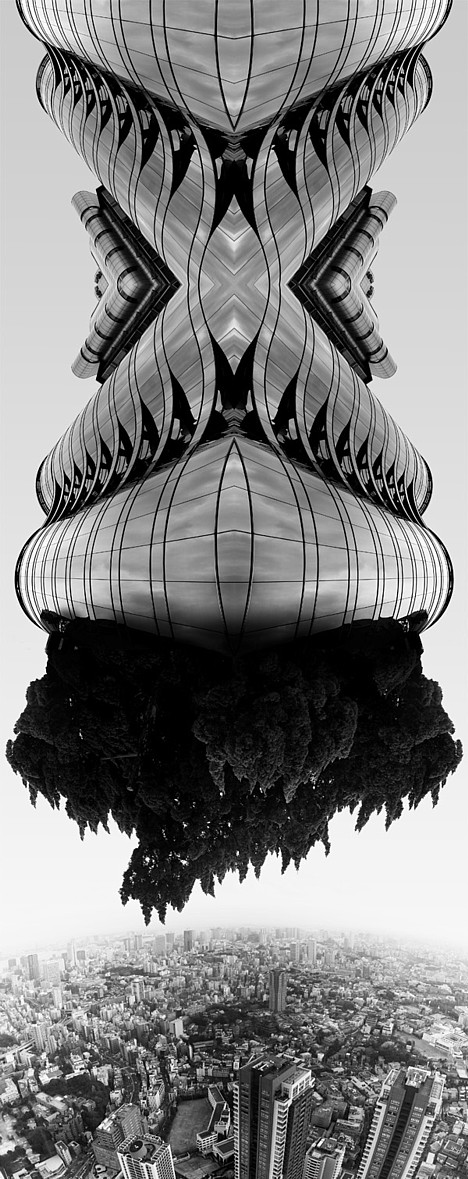
From Frederic Gautron's Urbano-vegetal series of digital photomontages.
[Link: Made in Tokyo]
In Tomoyuki Sakaguchi's night photos of suburban Tokyo, familiar landscapes of densely arranged middle-class prefab homes, tightly parked cars, small gardens and anonymous street corners are somehow rendered strangely unfamiliar under the artificial glow of street lights. Check Sakaguchi's website (or his book) for a huge collection of high-res images.
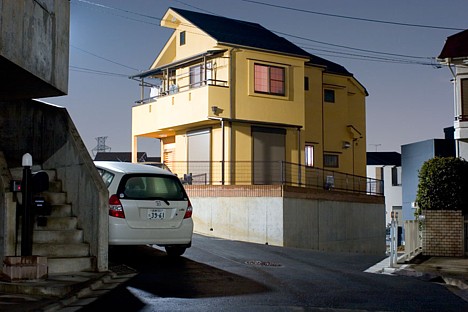
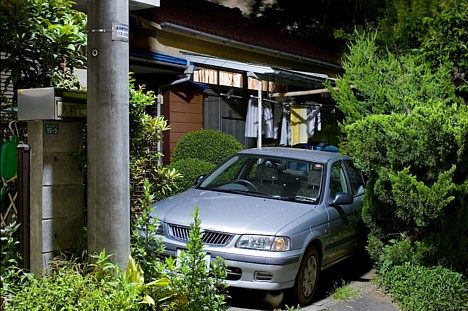
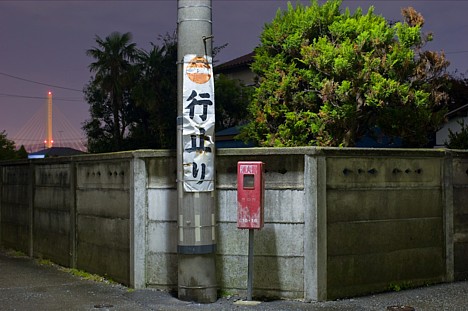
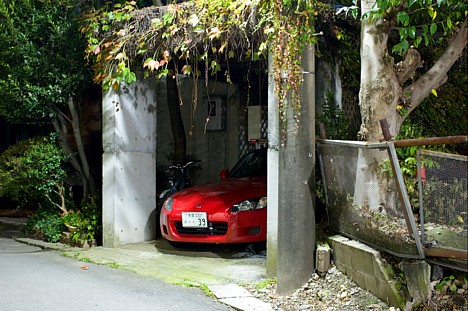
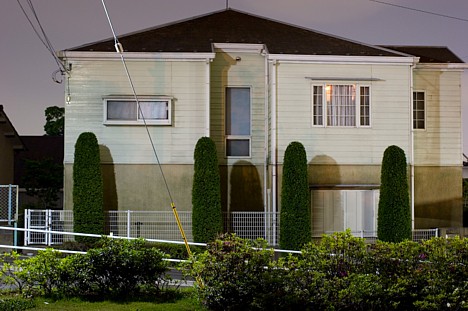
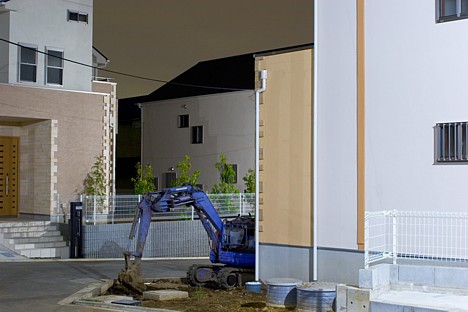
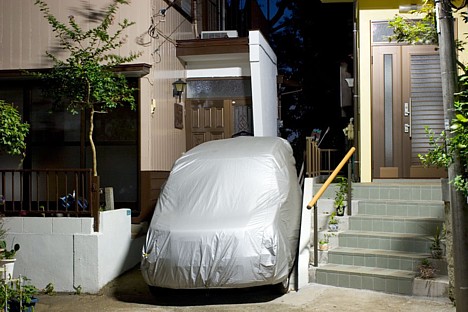
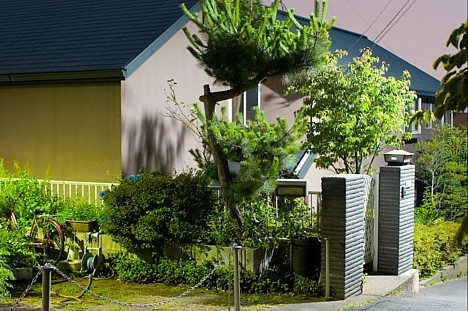
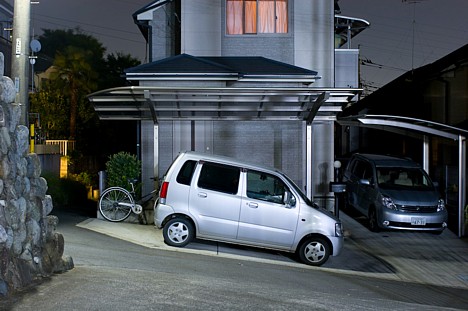
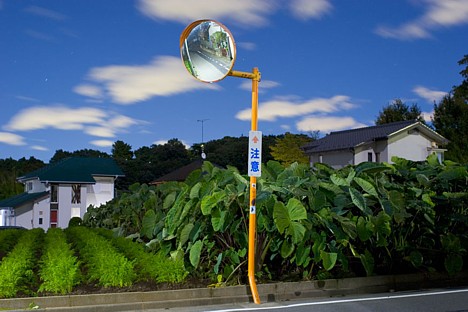
[Link: tsaka.jp]
Here are a few links to photo collections of Japanese manhole covers.
- Okachin Manhole Cover Gallery: This collection of 1,000+ manhole cover photos is organized by prefecture. Use the links on the left side of the page to navigate the site.
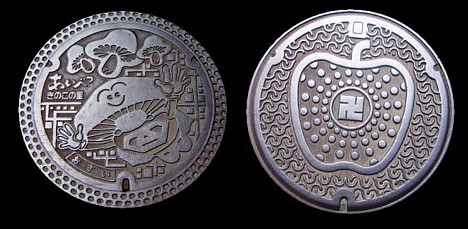

- - - - - - - - - -
- Flickr Pool -- Japanese Manhole Covers: Over 400 great photos here.
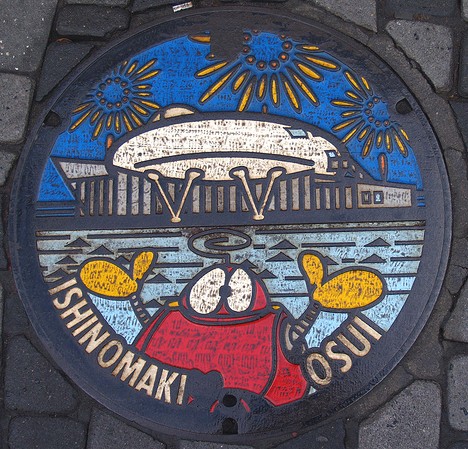
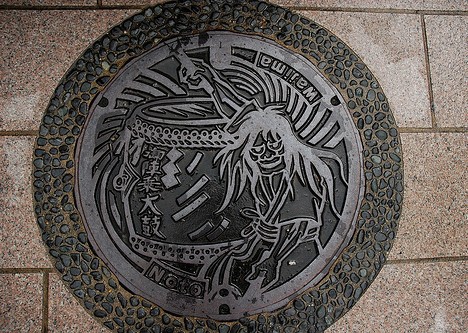
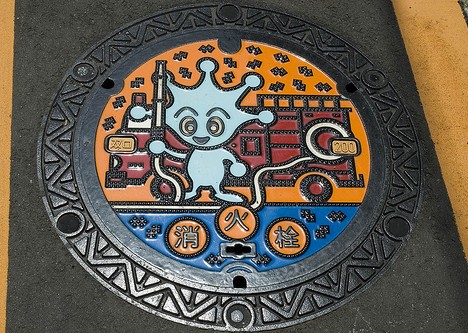
- - - - - - - - - -
- Design Manhole Collection: To use this interactive map, click a prefecture and then click the town names in the grid on the following page to display the manholes for that area. Click each photo to enlarge.
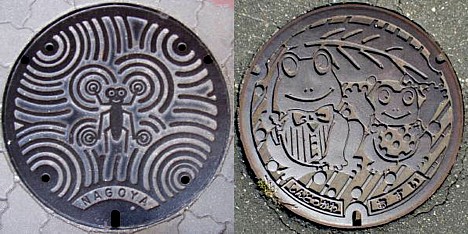
- - - - - - - - - -
- Manhole Map: This interactive map by the Journal of Sewerage Monthly contains hundreds of photos organized by prefecture and town. Click a prefecture on the map, and then click the links on the following page to display the manhole covers for each town.
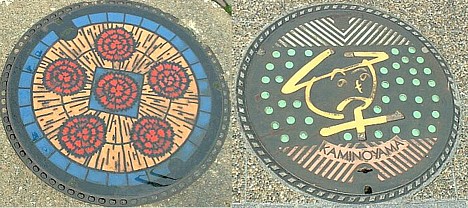
- - - - - - - - - -
- Kyoto Manhole Covers: The Kyoto prefecture website has several dozen photos of manhole covers used in towns around the prefecture. Click each photo to enlarge.
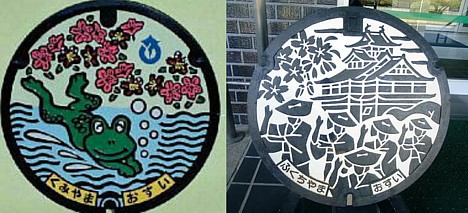
- - - - - - - - - -
- Manhole Blog: Lots of manhole cover photos from northern Japan. Use the ???? ("previous page") link in the bottom-left corner to scroll through the site.
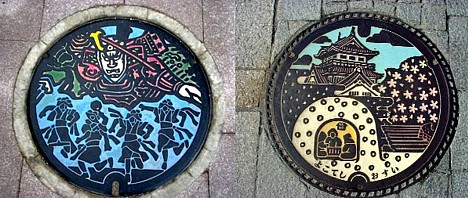
- - - - - - - - - -
- Manhole Box: Six pages of manhole cover photos.
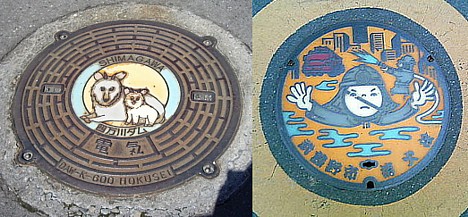
- - - - - - - - - -
- Google image search for Manhole/ Manhole cover/ Design manhole: Lots more here.
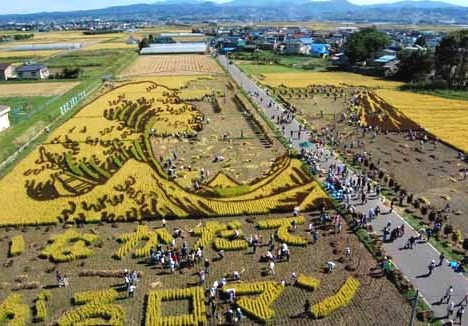
On September 30, about 900 volunteers participating in a hands-on rice farming tour began the annual harvest of the Inakadate village (Aomori prefecture) rice paddy art, which this year depicted a pair of famous Hokusai woodblock prints created with four different varieties of rice.
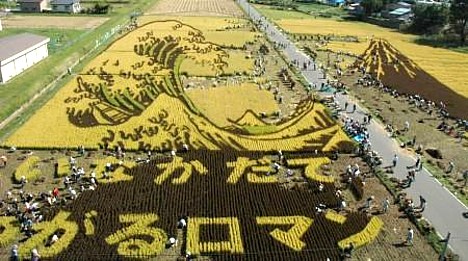
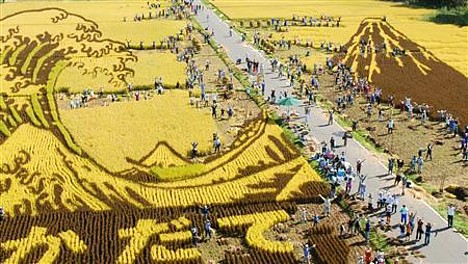
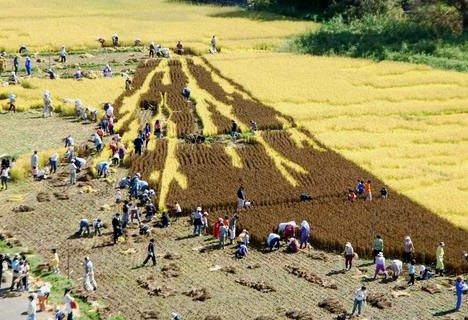
View more photos of rice paddy art HERE.
[Photos via: Inakadate Village, Mainichi, Sankei, Yomiuri]
Shuetsu Sato is a Japan Railways employee known for making complex, stylish signs and maps from strips of colored duct tape. For years, his work graced the walls and construction barriers at Shinjuku station while it underwent extensive renovations. Sato's creative use of tape has earned him quite a following, particularly online, and recent blog buzz has prompted some Japanese TV networks to take notice. This video from an NHK news magazine program profiles Sato and his work at Nippori station on Tokyo's Yamanote line, where his most recent work is currently on display.
The video begins with commentary about the online popularity of Sato's work. (At the 30-second mark, a screenshot of Pink Tentacle appears while the narrator describes the attention Sato's work has received on "overseas" blogs...!?!) From 1:00 to 2:00, Sato shows how it is done -- this is the highlight of the video, as it shows the degree of complexity involved in shaping tape into beautiful kanji. From 2:00 to 2:40, Sato laughs off some criticism he has received for the way his "?" character looks, and from 4:30 to 5:00, Sato demonstrates his techniques for creating rounded corners. At 5:30, one of the hosts tells Sato that bloggers have honored him by naming his font style "Shuetsu." He looks almost as if he might be impressed.
Here are a few photos of Sato's work at Nippori station:
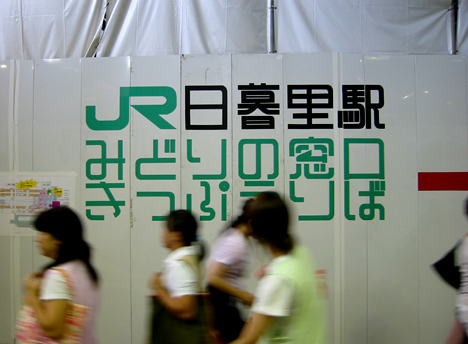
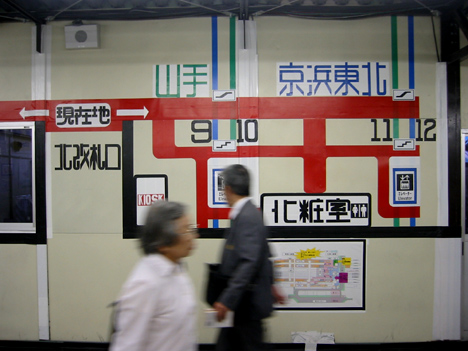
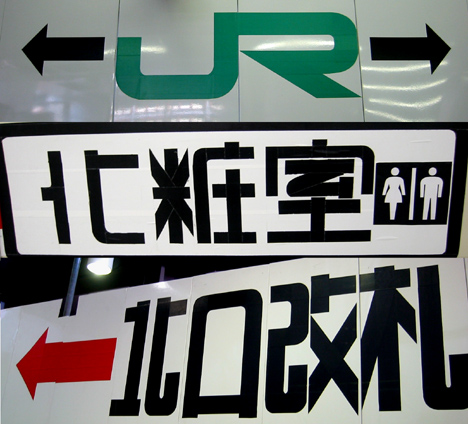
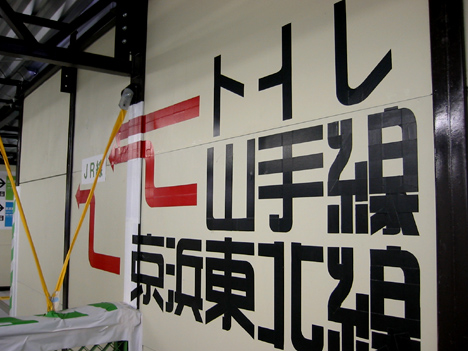
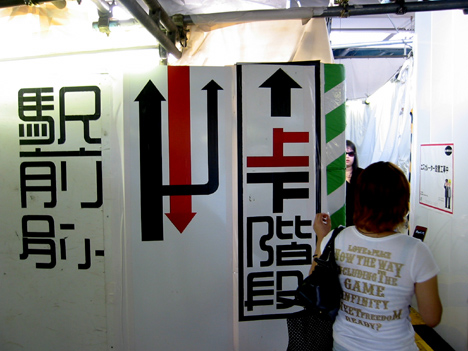
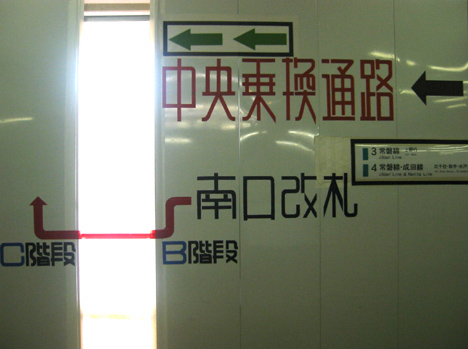
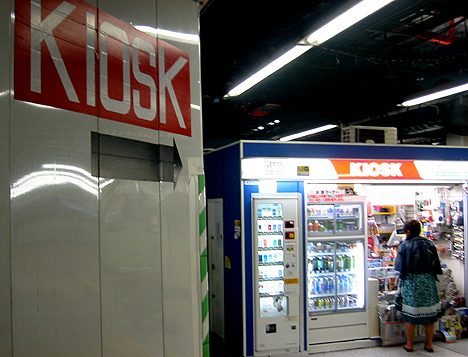
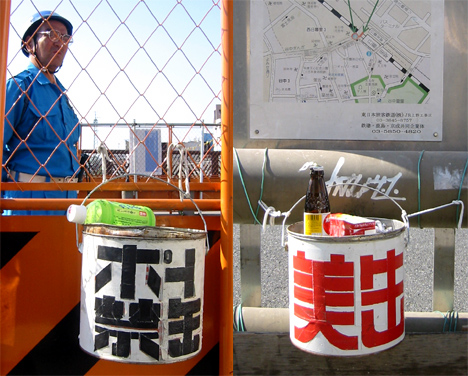
 While frightening the birds away, about 60 scarecrows along a stretch of the Route 280 Bypass in Aomori are attracting the attention of passing motorists.
While frightening the birds away, about 60 scarecrows along a stretch of the Route 280 Bypass in Aomori are attracting the attention of passing motorists.
The scarecrow display, which includes one modeled after sumo wrestler Asashoryu scandalously playing soccer (pictured right), is part of Kakashi Road 280 (kakashi means "scarecrow"), a recently established annual September event designed to stimulate the local economy and welcome the 2010 opening of Tohoku Shinkansen Shin-Aomori station.
Organizers hope to eventually create 150 scarecrows to watch over the 15-kilometer stretch of road.
Scarecrows are also known to populate the roadsides in other parts of Japan. The photos below are from Machida (a Tokyo suburb) and Nara.
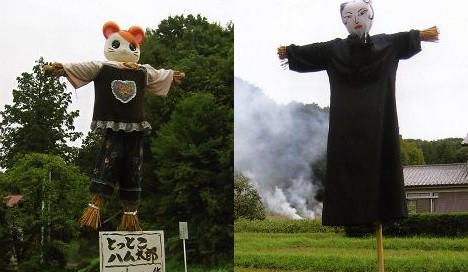
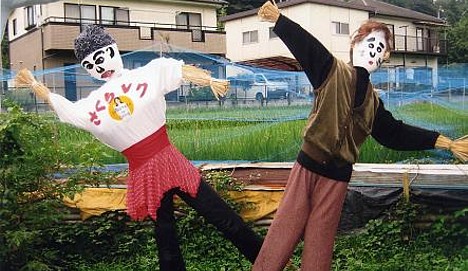
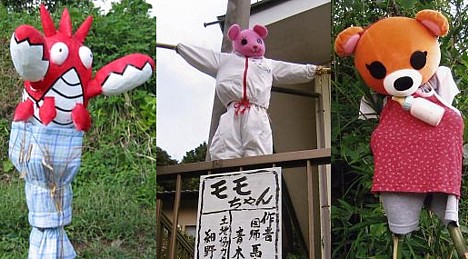
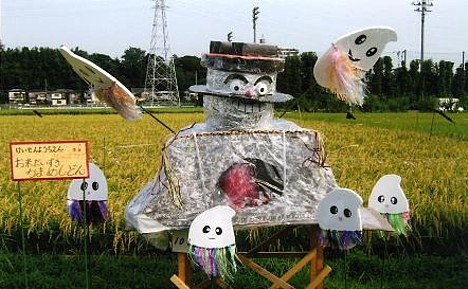
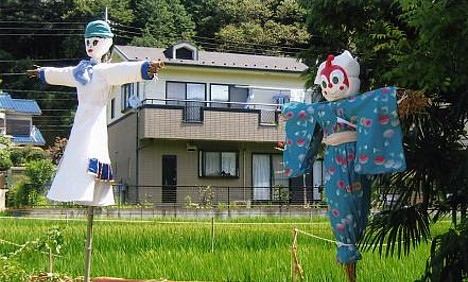
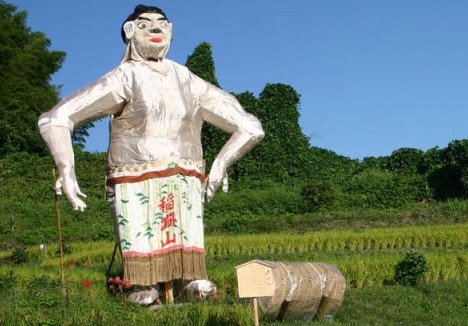
More photos of Machida scarecrows: 1, 2, 3
[Via: Mainichi]
Here are ten time-lapse videos shot in Tokyo...
1. 35 years of Shinjuku construction: 1969 to 2004 in 10 seconds.
2. Roppongi Hills construction: April 2001 to July 2003 in 35 seconds. (Watch the slower version here.)
3. Yamanote Tour: Circle the Yamanote Line in under 4 minutes. (Watch the slower version here.)
4. Lightning Tokyo: Electrical storm strikes Higashiyama, Tokyo.
5. Tokyo En Lapse: Quirky moonwalking, Yamanote Line footage, and a great sunset.
6. Stop Go Tokyo: The granddaddy of Tokyo time-lapse videos on YouTube. Awesome.
7. Tokyo Skyline: Cool time-lapse footage for the first minute.
8. Timelapse Video From Around The World: The Tokyo scenes begin at 1:47.
9. Tokyo 24-Hour Timelapse: 24 hours of webcam footage shot from a high-rise apartment near the Sumida River.
10. Turbulence -- Stop Motion Series (via Grow-a-Brain): Tons of stop-motion photo animations that explore the body language of Tokyo train passengers.
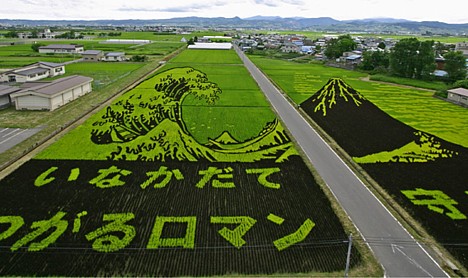
Each year, farmers in the town of Inakadate in Aomori prefecture create works of crop art by growing a little purple and yellow-leafed kodaimai rice along with their local green-leafed tsugaru-roman variety. This year's creation -- a pair of grassy reproductions of famous woodblock prints from Hokusai's 36 Views of Mount Fuji -- has begun to appear (above). It will be visible until the rice is harvested in September.

The residents of Inakadate have been drawing pictures with rice since 1993. Here are a few crops from the recent past, found at this site.
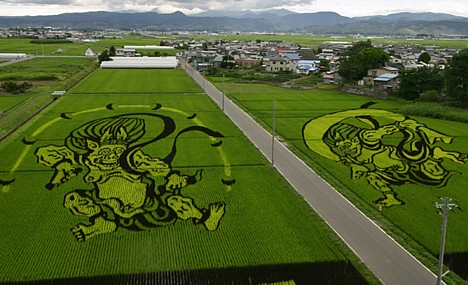
2006
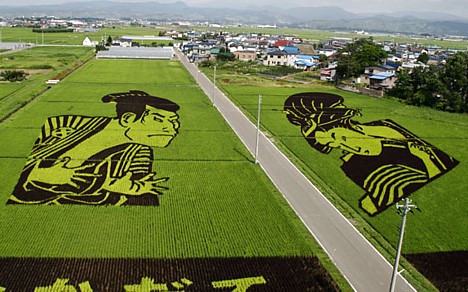
2005
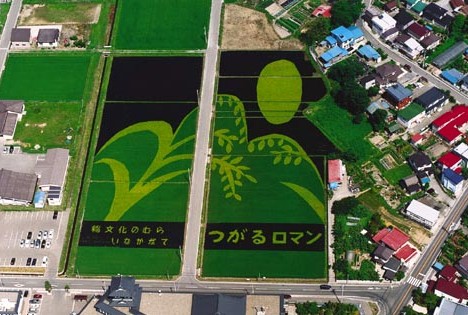
2002
While Inakadate is Japan's most famous rice paddy decorating town, a couple of other places in Japan have joined in the fun.
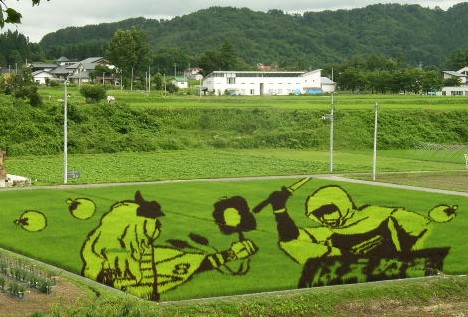
Yonezawa, Yamagata prefecture, 2007
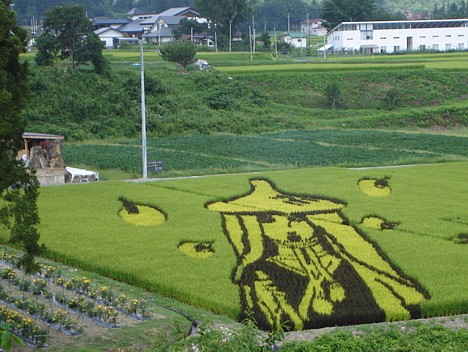
Yonezawa, Yamagata prefecture, 2006

Nishio, Aichi prefecture (2005, 2006)
UPDATE (Oct 1, 2007): Check out photos of the 2007 harvest HERE.
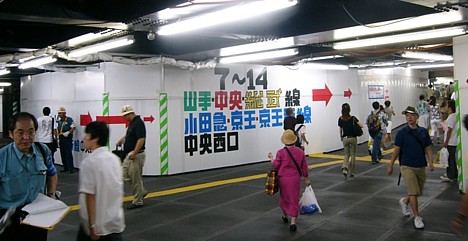
If, over the past several years, you have had the privilege of joining the 3.3 million people that pass through Tokyo's Shinjuku station each day, you may have observed the work of Mr. Sato. A construction worker by trade, Sato uses strips of adhesive tape to create elaborate makeshift signs that help people navigate the temporary chaos of ongoing renovation work at Shinjuku station.
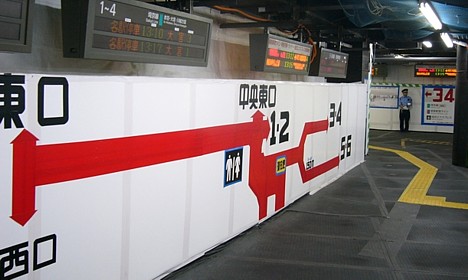
Sato's signs, which feature a peculiarly attractive gothic font, are the focus of a 15-minute documentary video put together by TrioFour, a small group of independent filmmakers. The video, which can be seen in two parts here (part 1, part 2), consists mainly of a long interview with Sato, entirely in Japanese (no subtitles), but it also shows lots of photos of his work from 2004. The photos below are still shots taken from the video.
With his work at Shinjuku complete, Sato has boarded the Yamanote line and taken his adhesive tape sign creation skills to the now-under-renovation Nippori station. TrioFour followed him there and is working on a new documentary.
========================================
UPDATE: More photos HERE and HERE.
========================================
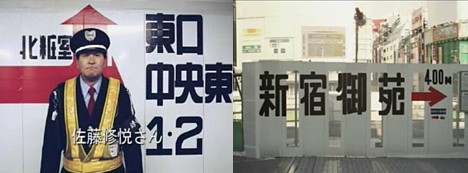
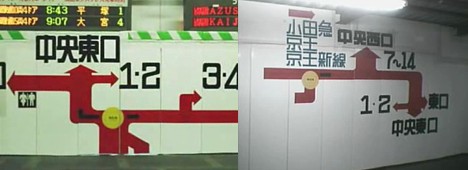
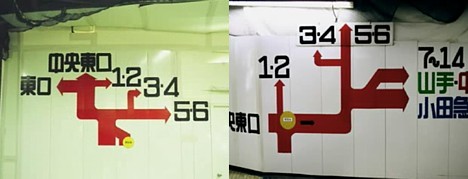
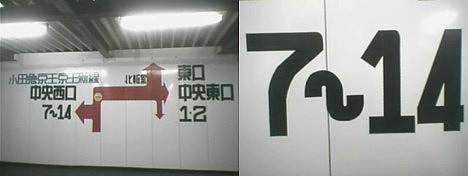
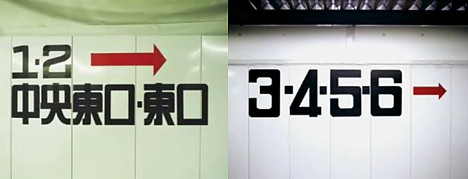
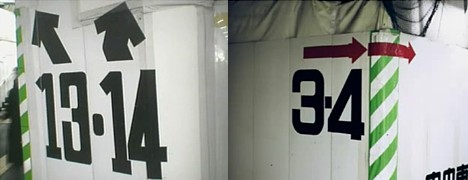
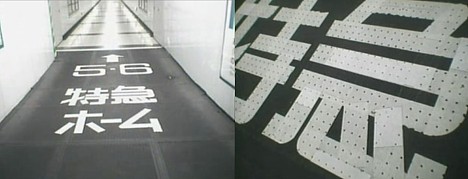
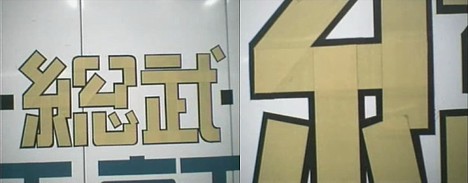
[Via: Slashdot Japan]